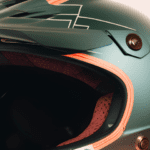Helmet: Ensuring Safety and Style on Two Wheels
Introduction :
Cycling is a popular mode of transportation, recreational activity, and a way to stay fit. Whether you’re a professional cyclist or enjoy occasional rides, prioritizing safety is paramount. One of the essential safety gear for any cyclist is a helmet. This article explores the importance of helmets, their features, and why they are a must-have accessory for every cyclist.
-
Understanding the Importance of Helmets
1.1 Protecting Your Most Valuable Asset
Your head is one of the most vulnerable parts of your body when cycling. In the event of an accident or a fall, a helmet provides crucial protection for your skull and brain. It can significantly reduce the risk of severe head injuries and even save lives.
1.2 Complying with Safety Regulations
In many jurisdictions, wearing a helmet is mandatory for cyclists, especially for children. These regulations are in place to promote safety and reduce the severity of injuries in case of accidents. Wearing a helmet not only protects you but also ensures compliance with the law.
1.3 Setting an Example
By wearing a helmet, you set a positive example for others, including children and novice cyclists. It encourages a culture of safety and responsible cycling, inspiring others to prioritize their well-being on the road.
-
Key Features of Helmets
2.1 Helmet Types and Styles
Helmets come in various types and styles to cater to different cycling disciplines and personal preferences. From road helmets designed for speed and aerodynamics to mountain helmets with added coverage for off-road adventures, there is a helmet for every type of cyclist.
2.2 Safety Standards and Certifications
When choosing a helmet, it’s essential to look for safety certifications such as CPSC, ASTM, or Snell. These certifications ensure that the helmet meets rigorous safety standards and provides reliable protection. Always opt for helmets that comply with these standards.
2.3 Fit and Adjustability
A well-fitting helmet is crucial for optimum safety and comfort. Look for helmets with adjustable straps and sizing systems to ensure a snug and secure fit. It should sit level on your head, covering the top of your forehead without obstructing your vision.
2.4 Ventilation and Comfort
Good ventilation is essential to keep your head cool and comfortable during long rides. Look for helmets with well-placed vents that allow airflow without compromising safety. Padded interiors and moisture-wicking liners further enhance comfort.
-
Choosing the Right Helmet
3.1 Assessing you’re Cycling Needs
Consider your cycling habits and goals when selecting a helmet. If you primarily ride on roads, a lightweight and aerodynamic helmet would be suitable. For off-road enthusiasts, a helmet with added protection and visors is recommended.
3.2 Trying It On
Always try on a helmet before purchasing it to ensure the right fit. Sizes may vary between brands, so refer to the manufacturer’s size chart for guidance. Remember, a helmet should fit snugly without any wobbling or discomfort.
3.3 Considering Additional Features
Some helmets come with extra features like integrated lights, MIPS technology for enhanced rotational impact protection, or detachable visors. Assess these additional features based on your preferences and specific cycling needs.
-
Caring for Your Helmet
4.1 Regular Cleaning and Maintenance
To ensure the longevity and effectiveness of your helmet, it’s crucial to keep it clean and well-maintained. Use mild soap and water to clean the shell and padding regularly. Avoid using harsh chemicals or solvents that may degrade the helmet’s integrity.
4.2 Replacing Damaged Helmets
Helmets are designed to absorb impact during accidents. If your helmet has been involved in a crash or sustained significant damage, it is essential to replace it. Even if the damage is not visible, the helmet’s ability to protect may be compromised.
Conclusion
Investing in a high-quality helmet is a wise decision for any cyclist. It ensures your safety, and compliance with regulations, and sets an example for others. Remember to choose a helmet that fits well, meets safety standards, and aligns with your cycling needs. Prioritizing your safety on two wheels is a small step that goes a long way.
—
FAQs (Frequently Asked Questions)
-
Are expensive helmets safer than budget-friendly ones?
Price is not necessarily an indicator of safety when it comes to helmets. Look for helmets that meet the required safety certifications and offer proper fit and protection.
-
Can I wear a helmet for other sports activities?
While helmets are primarily designed for cycling, some models can be suitable for other non-motorized sports like rollerblading or skateboarding. However, it’s best to consult the manufacturer’s recommendations.
-
How often should I replace my helmet?
Manufacturers generally recommend replacing a helmet every 3-5 years, even if it hasn’t been involved in an accident. However, if your helmet has been damaged or shows signs of wear and tear, it’s essential to replace it sooner.
-
Can I personalize my helmet with stickers or paint?
While it may be tempting to personalize your helmet, it’s essential to follow the manufacturer\’s guidelines. Alterations like stickers or paint can compromise the integrity of the helmet, reducing its effectiveness.
-
Can children wear adult-sized helmets?
Children should wear helmets specifically designed for their age group. Adult-sized helmets may not provide a proper fit or adequate protection for children.
Check out some awesome helmets
Read our other blog

